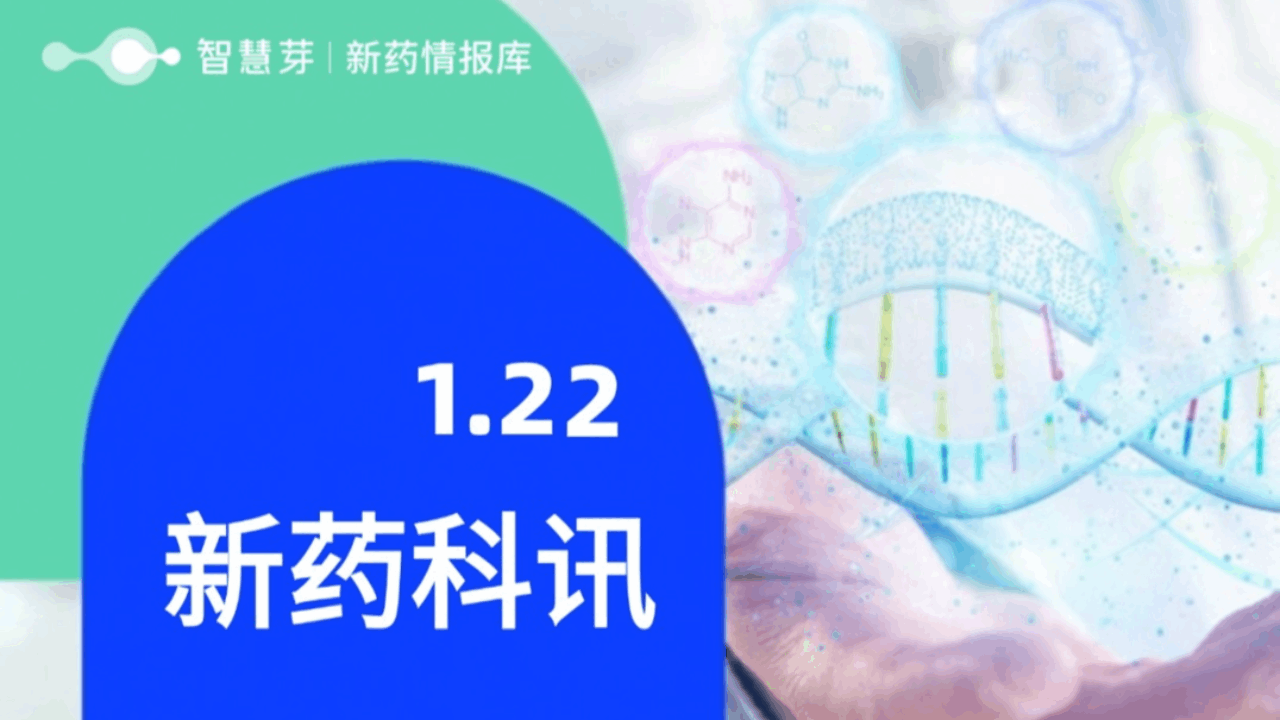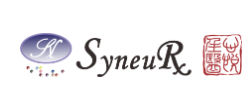预约演示
更新于:2025-05-07
GlyT1
更新于:2025-05-07
基本信息
别名 GlyT-1、GLYT1、SLC6A9 + [3] |
简介 Sodium- and chloride-dependent glycine transporter (PubMed:8183239). Essential for regulating glycine concentrations at inhibitory glycinergic synapses.
Sodium- and chloride-dependent glycine transporter.
Sodium- and chloride-dependent glycine transporter. |
关联
33
项与 GlyT1 相关的药物靶点 |
作用机制 GlyT1抑制剂 |
在研机构 |
原研机构 |
非在研适应症- |
最高研发阶段临床3期 |
首次获批国家/地区- |
首次获批日期1800-01-20 |
靶点 |
作用机制 GlyT1抑制剂 |
在研适应症 |
最高研发阶段临床3期 |
首次获批国家/地区- |
首次获批日期1800-01-20 |
靶点 |
作用机制 GlyT1抑制剂 |
在研适应症 |
最高研发阶段临床3期 |
首次获批国家/地区- |
首次获批日期1800-01-20 |
95
项与 GlyT1 相关的临床试验NCT06910358
APOLLO: A Randomized, Double-Blind, Placebo-Controlled Study of Bitopertin to Evaluate the Efficacy, Safety, and Tolerability in Participants With Erythropoietic Protoporphyria (EPP) or X-Linked Protoporphyria (XLP)
The goal of this clinical trial is to learn if bitopertin works and is safe to treat EPP or XLP in participants 12 years or older. The main questions it aims to answer are:
* Whether bitopertin increases pain-free sunlight exposure after 6 months of treatment in participants with EPP or XLP.
* How PPIX concentration levels change from before bitopertin treatment to after 6 months of treatment.
Researchers will compare bitopertin to a placebo look-alike substance that contains no drug.
Participants will complete daily questionnaires and attend study visits for assessments.
* Whether bitopertin increases pain-free sunlight exposure after 6 months of treatment in participants with EPP or XLP.
* How PPIX concentration levels change from before bitopertin treatment to after 6 months of treatment.
Researchers will compare bitopertin to a placebo look-alike substance that contains no drug.
Participants will complete daily questionnaires and attend study visits for assessments.
开始日期2025-04-01 |
申办/合作机构 |
NCT06070597
Effects of Iclepertin on the QT Interval Following Oral Administration in Healthy Male and Female Subjects (a Double-blind, Randomised, Placebo-controlled, Multiple-dose, Parallel Group With Nested Crossover Design Trial, With Moxifloxacin as Positive Control)
This study aims to evaluate the effects of iclepertin in the range of therapeutic to supra-therapeutic exposures on the (QT/QTc): Electrocardiogram (ECG) time interval from the start of the QRS complex (ECG time interval) to the end of the T wave / QT interval corrected for heart rate, e.g. using the method of Fridericia or Bazett interval and other ECG parameters.
开始日期2024-01-25 |
申办/合作机构 |
NCT05883748
An Open-Label, Long-Term Study to Investigate the Safety, Tolerability, and Efficacy of DISC-1459 (Bitopertin) in Participants with Erythropoietic Protoporphyria (EPP)
This is an open-label, long-term extension study to investigate the safety, tolerability and efficacy of DISC-1459 in participants with EPP.
开始日期2023-08-31 |
申办/合作机构 |
100 项与 GlyT1 相关的临床结果
登录后查看更多信息
100 项与 GlyT1 相关的转化医学
登录后查看更多信息
0 项与 GlyT1 相关的专利(医药)
登录后查看更多信息
574
项与 GlyT1 相关的文献(医药)2025-06-01·Schizophrenia Research: Cognition
Efficacy and safety of iclepertin (BI 425809) with adjunctive computerized cognitive training in patients with schizophrenia
Article
作者: Fu, Eric ; McDonald, Sean ; Harvey, Philip D ; Reuteman-Fowler, Corey
2025-05-24·Journal of Biomolecular Structure and Dynamics
Monophasic coamorphous sulpiride: a leap in physicochemical attributes and dual inhibition of GlyT1 and P-glycoprotein, supported by experimental and computational insights
Article
作者: Bazaz, Mohd Rabi ; Singh, Shashi Bala ; Dandekar, Manoj P. ; Tomar, Devendra Singh ; Pardhi, Ekta ; Khemchandani, Rahul ; Samanthula, Gananadhamu ; Mehra, Neelesh Kumar
2025-05-01·Ecotoxicology and Environmental Safety
Liver organoids uncover tire-derived 6-PPDQ-induced hepatotoxicity of: A preliminary application of environmental toxicology and safety assessment
Article
作者: Wei, Yuan ; Zhang, Tianyi ; Ge, Yiling ; Yang, Sheng ; Chen, Zaozao ; Luo, Kai ; Zhang, Juan ; Pu, Yuepu ; Liang, Geyu
59
项与 GlyT1 相关的新闻(医药)2025-01-22
1. 2025年FDA首批!阿斯利康/第一三共TROP2 ADC在美国获批上市
1月18日,美国FDA宣布批准由阿斯利康(AstraZeneca)与第一三共(Daiichi Sankyo)联合开发的抗体偶联药物(ADC)Datroway(datopotamab deruxtecan或Dato-DXd)上市,用于治疗无法切除或转移性激素受体(HR)阳性、HER2阴性的成年乳腺癌患者,这些患者曾接受过内分泌疗法和化疗。3期试验结果显示,Datroway相较于化疗,可将患者的疾病进展或死亡风险降低37%。根据阿斯利康新闻稿,这是Datroway首次在美国获批。美国FDA的批准主要基于TROPION-Breast01试验的结果。分析显示,Datroway治疗组的中位PFS为6.9个月(95% CI:5.7,7.4),化疗组为4.9个月(95% CI:4.2,5.5),风险比(HR)为0.63(95% CI:0.52,0.76),双侧p值<0.0001。Datroway治疗组的中位OS为18.6个月(95% CI:17.3,20.1),化疗组为18.3个月(95% CI:17.3,20.5),HR为1.01(95% CI:0.83,1.22),双侧p值未达统计学显著性。
2. 安进KRAS抑制剂再获FDA批准新适应症
1月18日,安进(Amgen)宣布,美国FDA已批准其KRAS G12C抑制剂Lumakras(sotorasib)与EGFR抑制剂Vectibix(panitumumab)联合,用于治疗经FDA批准检测确认携带KRAS G12C突变的转移性结直肠癌(mCRC)成人患者,这些患者曾接受过基于氟嘧啶类、奥沙利铂和伊立替康的化疗。关键3期CodeBreaK 300研究结果显示,接受Lumakras与Vectibix联合疗法的mCRC患者,其无进展生存期(PFS)是接受标准治疗(SOC)患者的两倍以上。具体而言,接受Lumakras(每日960 mg)联合Vectibix的患者(n=53)相较于接受标准治疗的患者(n=54),其中位PFS从2个月(1.9,3.9)提高至5.6个月(4.2,6.3),风险比(HR)为0.48(95% CI:0.3,0.78),p值为0.005。Lumakras联合疗法组患者的中位OS尚未达到(8.6,NR),而标准治疗组患者的OS为10.3个月(7,NR),HR为0.7(95% CI:0.41,1.18);OS的最终分析未达到统计学显著性。
3. 一线套细胞淋巴瘤!阿斯利康BTK抑制剂「阿可替尼」在美获批新适应症
1月17日,阿斯利康宣布BTK抑制剂Calquence(阿可替尼)获FDA批准新适应症,用于联合苯达莫司汀和利妥昔单抗治疗既往未经治疗且不适合自体造血干细胞移植的套细胞淋巴瘤(MCL)成人患者。该药物是首个获准用于一线治疗MCL的BTK抑制剂。FDA此次批准主要是基于III期ECHO研究的积极结果。结果显示,阿可替尼组MCL患者的PFS延长效果优于SOC组(66.4 vs 49.6个月,HR=0.73,P=0.0160),数据具有统计学意义和临床意义。此外,在该研究中还观察到阿可替尼组MCL患者的总生存期(OS)呈延长的积极趋势(HR=0.86,P=0.27)。
4. 礼来IL-23单抗在美国获批克罗恩病新适应症
1月16日,礼来宣布,美国FDA已批准其药品Omvoh(mirikizumab)用于治疗成人中度至重度活动性克罗恩病(CD)。临床试验结果显示,第一年达到临床缓解和内镜缓解的患者,在开放标签扩展试验中接受治疗一年后(即连续治疗两年),近90%的患者维持了临床缓解。Omvoh是一种人源化IgG4单克隆抗体,可与IL-23的p19亚基结合,阻断IL-23介导的炎症反应。该疗法于2023年10月获FDA批准,成为首个用于治疗中至重度活动性溃疡性结肠炎(UC)的IL23p19拮抗剂,并已在全球44个国家或地区获批。此次批准主要基于Omvoh在3期VIVID-1研究中的积极结果。VIVID-1试验达到两个主要终点:通过克罗恩病活动指数(CDAI)评估的一年临床缓解率显示,接受Omvoh治疗的患者中有53%在一年时达到临床缓解,此数值在安慰剂组为36%(p<0.001);在一年内镜缓解率方面,接受Omvoh治疗的患者中有46%在一年时达到可见的肠道内壁愈合,而安慰剂组患者在此数值仅为23%(p<0.001)。
5. 奥赛康药业三代EGFR-TKI国内获批上市
1月16日,国家药监局官网显示,奥赛康药业的1类创新药利厄替尼片(limertinib/ASK120067,商品名:奥壹新)获批上市,用于治疗既往接受表皮生长因子受体酪氨酸激酶抑制剂(EGFR-TKI)治疗时或治疗后出现疾病进展的EGFR T790M突变阳性局部晚期或转移性非小细胞肺癌(NSCLC)成人患者。利厄替尼由奥赛康药业与上海药物所、广州健康院合作开发,是一款高选择性、不可逆第三代EGFR-TKI。一项多中心、开放、单臂IIb期临床研究结果显示,经独立评审委员会(IRC)评估的客观缓解率(ORR)为68.8%,疾病控制率(DCR)为92.4%,缓解持续时间(DoR)为11.1个月,无进展生存期(PFS)为11.0个月。
6. 英派药业PARP抑制剂国内获批上市
1月16日,国家药监局官网显示,英派药业的PARP抑制剂塞纳帕利胶囊(senaparib,商品名:派舒宁)获批上市,用于国际妇产科联盟(“FIGO”)III-IV期上皮性卵巢癌、输卵管癌或原发性腹膜癌患者在一线含铂化疗达到完全或部分缓解后的维持治疗。本次获批主要基于FLAMES研究的积极结果。该研究是一项随机、双盲、安慰剂对照、多中心的III期临床研究,FLAMES研究的期中分析结果表明,塞纳帕利可显著延长晚期卵巢癌患者的无进展生存期(PFS),且不论患者的乳腺癌易感基因(BRCA)表达如何,患者均可获益。
7. 强生FGFR抑制剂「厄达替尼」在国内获批上市,治疗尿路上皮癌
1月13日,强生宣布旗下创新治疗药物厄达替尼片 (商品名:博珂)正式获得国家药品监督管理局批准,用于治疗携带易感型FGFR3基因变异,且既往接受至少一线含抗PD-1或抗PD-L1期间或之后出现疾病进展的手术不可切除的局部晚期或转移性尿路上皮癌(UC)成人患者。厄达替尼片是一款新型靶向治疗药物,可显著改善携带FGFR3基因变异患者的总生存期和无进展生存期,为既往治疗选择有限的患者提供了全新的治疗方案。
8. 和黄医药「赛沃替尼」获批新适应症,用于NSCLC
1月13日,国家药监局网站显示,和黄医药赛沃替尼片获批新适应症,用于治疗初治MET外显子14跳跃突变非小细胞肺癌(NSCLC)患者。赛沃替尼(savolitinib,沃瑞沙)是一种口服的高选择性小分子c-Met抑制剂,最初由和黄医药开发。2011年,和黄医药与阿斯利康达成一项全球许可协议,将共同开发沃瑞沙并促进其商业化。2021年6月,赛沃替尼在中国获附条件批准,用于治疗接受系统治疗后疾病进展或无法接受化疗的MET外显子14跳跃突变的NSCLC患者。
9. 默沙东PD-1单抗在国内获批新适应症
1月13日,默沙东宣布抗PD-1单抗帕博利珠单抗又一项新适应症上市申请获批,单药用于通过充分验证的检测评估肿瘤表达PD-L1(综合阳性评分(CPS)≥1)的转移性或不可切除的复发性头颈部鳞状细胞癌患者的一线治疗。至此,帕博利珠单抗在中国获批的适应症已经达到19个。此前,NMPA于2020年12月批准帕博利珠单抗单药用于通过充分验证的检测评估肿瘤表达PD-L1(综合阳性评分(CPS)≥20)的转移性或不可切除的复发性头颈部鳞状细胞癌患者的一线治疗。
10. 继艾伯维之后,勃林格殷格翰3期精神分裂症项目宣告失败
1月16日,勃林格殷格翰(Boehringer Ingelheim)公布其在研GlyT1抑制剂Iclepertin治疗成人精神分裂症认知障碍的3期临床项目CONNEX的主要结果,显示主要终点和关键次要终点均未达到。勃林格殷格翰决定停止长期延长试验 CONNEX-X,立即生效。GlyT1是一种调节突触间隙中甘氨酸浓度的转运蛋白,抑制GlyT1可增加谷氨酸神经元突触间隙中的甘氨酸浓度。Iclepertin是GlyT1的强效选择性抑制剂,可增加突触间隙甘氨酸浓度,间接增强NMDA受体信号传导。Iclepertin的II期研究数据显示,与安慰剂相比,Iclepertin在认知方面有显著改善,且总体安全性和耐受性良好。由于疗效突出,iclepertin此前还曾被美国FDA授予突破性疗法认定,并被中国CDE纳入突破性治疗品种。无独有偶,两个月前,艾伯维的精神分裂症新药emraclidine也遭遇了滑铁卢。
1. 强生146亿美元收购Intra-Cellular
1月13日,强生宣布已与Intra-Cellular Therapies达成最终协议,将以每股132美元的价格收购后者的所有流通股份,总交易额约为146亿美元。通过这项协议,强生获得了Intra-Cellular的每日1次口服抗精神病产品Caplyta(lumateperone,卢美哌隆)。该药物是一款5-羟色胺2A(5-HT2A)受体拮抗剂和多巴胺受体D2调节剂,已于2019年12月被FDA批准用于治疗精神分裂症成人患者,并于2021年12月获批用于辅助治疗与I型或II型双相情感障碍(双相抑郁症)相关的抑郁发作。2024年12月,Intra-Cellular还向FDA提交了Caplyta的第3项新适应症上市申请,用于辅助治疗重度抑郁症。除此之外,强生还可以获得包括lenrispodun、ITI-1284、ITI-333等在内的5款在研药物,进一步补充和加强了强生的精神疾病领域管线布局。
2. 超10亿美元!先声再明GPRC5D/BCMA/CD3三抗授权给艾伯维
1月13日,先声药业宣布与艾伯维达成合作协议,艾伯维将获得SIM0500的许可选择性权益,支付预付款,以及最高10.55亿美元的选择性权益付款和里程碑付款,以及大中华区以外地区的销售分成。艾伯维有权就大众化地区销售额收取销售分成。SIM0500为一款先声药业自主研发的GPRC5D/BCMA/CD3三抗,已获FDA快速通道资格,治疗多发性骨髓瘤。
3. 葛兰素史克11.5亿美元收购
IDRx1月13日,葛兰素史克与IDRx达成收购协议,获得后者开发的KIT抑制剂IDRX-42。根据协议,葛兰素史克支付10亿美元预付款,1.5亿美元监管里程碑金额,以及德国默克负责区域的里程碑金额和一定比例的销售分成。
4. 映恩生物HER2 ADC与三生制药达成中国商业化合作
1月13日,映恩生物宣布将HER2 ADC新药DB-1303在中国内地、香港和澳门的商业化合作权利授权给三生制药,映恩生物将获得2500万美元预付款、4200万美元研发里程碑金额、以及潜在额外的销售里程碑付款。
5. 礼来25亿美元收购Scorpion,获得小分子PI3Kα抑制剂
1月13日,礼来公司和开Scorpion Therapeutics宣布,礼来公司将收购Scorpion的小分子PI3Kα抑制剂项目STX-478。STX-478是一种每日一次的口服突变选择性PI3Kα抑制剂,目前正在乳腺癌症和其他晚期实体瘤的1/2期临床试验中进行评估。根据协议条款,礼来将收购Scorpion,Scorpion股东将获得高达25亿美元的现金,包括预付款和在达到某些监管和销售里程碑后的后续付款。此外,作为交易的一部分,Scorpion将剥离一个新实体,以拥有其员工和非PI3Kα管线资产。
6. 吉利德17亿美元合作开发STAT6小分子疗法
1月13日,吉利德与LEO Pharma日前宣布达成战略合作伙伴关系,共同加速LEO Pharma的小分子口服STAT6项目的开发和商业化,旨在为炎症性疾病患者提供潜在治疗方案。根据该合作协议,吉利德将收购LEO Pharma的全部口服STAT6小分子抑制剂和靶向蛋白降解剂项目。吉利德将拥有开发、生产和商业化小分子口服STAT6项目的全球权利。LEO Pharma将有权选择在美国以外地区的皮肤病领域共同商业化口服项目。LEO Pharma将有资格获得总计高达17亿美元的款项,其中包括2.5亿美元的预付款。
7. 体内CAR-T细胞疗法火爆!Umoja Biopharma完成1亿美元C轮融资
1月14日,体内CAR-T细胞疗法领导者Umoja Biopharma宣布完成1亿美元C轮融资。本轮融资由Double Point Ventures和DCVC Bio共同领投,ARK Invest、Cormorant Asset Management、 MPM Capital、 Qiming Venture Partners USA等新老投资者参投。融资收益将用于推进Umoja体内CAR-T细胞疗法管线,包括其领先的靶向CD22的UB-VV400项目在多种肿瘤和自身免疫性疾病中的临床研究。
8. B细胞疗法公司完成9200万美元C轮融资
1月15日,B细胞疗法公司Be Biopharma(下文简称Be Bio)宣布完成9200万美元C轮融资,融资所得将用于治疗B型血友病的BE-101临床I/II期试验(BeCoMe-9)概念验证,以及将治疗低磷酸血症(HPP)的BE-102推向临床。本轮融资包括新投资者Nextech,以及现有投资者ARCH Venture Partners、Atlas Venture、RA Capital Management等。
9. 先声药业与费米子科技合作开发国内首个SSTR4靶点镇痛药物
1月17日,先声药业(2096.HK)和广州费米子科技有限责任公司共同宣布,双方已就一款靶向SSTR4的临床阶段镇痛候选创新药FZ002-037达成合作。FZ002-037项目是由费米子科技开发的高选择性口服小分子SSTR4激动剂,临床前研究显示,该靶点主要作用于外周镇痛,无中枢副作用和成瘾性等问题,有望为有长期用药需求的患者提供新选择。该项目是同靶点国内首个,全球第二个进入到临床阶段的产品,目前已完成国内Ⅰ期临床,针对糖尿病周围神经痛的II期研究即将启动,未来也有望将应用领域扩展至多种慢性痛与急性痛适应症。根据协议,先声药业将获得大中华地区(中国大陆、香港、澳门和台湾)开发和商业化FZ002-037的独家权利。费米子科技将获得首付款及里程碑付款,以及基于未来销售额的分层特许权使用费。
内容来源于网络,如有侵权,请联系删除。

上市批准临床失败抗体药物偶联物并购融资
2025-01-21
Pursuing accelerated approval for bitopertin in EPP with protoporphyrin IX (PPIX) reduction as the surrogate endpoint Planning to submit NDA under accelerated approval pathway in H2 2025 based on existing clinical data, including results from BEACON and AURORA Phase 2 trials Achieved regulatory alignment on APOLLO post-marketing confirmatory trial design and on track to initiate trial by mid-year 2025 Aligned on average monthly time in light without pain during the last month of the 6-month treatment period and percent change from baseline in whole-blood metal-free PPIX after 6 months of treatment as coprimary endpoints for confirmatory trial Management will host a conference call on Tuesday, January 21 at 8:00 am EST.
WATERTOWN, Mass., Jan. 21, 2025 (GLOBE NEWSWIRE) -- Disc Medicine, Inc. (NASDAQ:IRON), a clinical-stage biopharmaceutical company focused on the discovery, development, and commercialization of novel treatments for patients suffering from serious hematologic diseases, today announced positive feedback from its Type C meeting with the U.S. Food and Drug Administration (FDA) to discuss the APOLLO post-marketing confirmatory trial for bitopertin in EPP.
“Our recent FDA interaction marks another step toward delivering a potentially life-altering therapy for EPP patients, and we appreciate the collaboration with regulators, our investigators, and the EPP patient community which has brought us to this point,” said John Quisel, J.D., Ph.D., President and Chief Executive Officer of Disc. “Last year, we aligned with the FDA on PPIX reduction as a surrogate endpoint for potential accelerated approval of bitopertin, and we are actively pursuing that path with plans to submit an NDA in the second half of 2025. As part of that process, the Type C meeting has provided further clarity on our plans for the APOLLO post-marketing confirmatory trial, which will kick off by the middle of this year and could eventually be the basis for converting an accelerated approval, if granted, to a full approval.”
The meeting resulted in alignment on the design of the APOLLO post-marketing confirmatory trial. Key features include:
Co-primary endpoints of average monthly total time in sunlight without pain between 10:00 and 18:00 during the last month of the 6-month treatment period and percent change from baseline in whole blood metal-free PPIX after 6 months of treatment; Other measures of efficacy such as occurrence of phototoxic reactions, cumulative total pain-free time in sunlight, patient global impression of change (PGIC), and time to prodrome; Selection of 60 mg dose of bitopertin and 6-month treatment duration; Inclusion of patients aged 12+ with EPP including X-linked protoporphyria (XLP); and Double-blind, placebo-controlled study with ~150 patients randomized 1:1.
Disc plans to initiate the APOLLO trial by mid-2025 and will include sites in the US, Canada, Europe, and Australia. Based on guidance toward an NDA submission in H2 2025, Disc expects enrollment of the APOLLO trial to be well underway by the time of an accelerated approval, if granted.
Management will host a call to discuss these updates on Tuesday, January 21 at 8:00 am EST. Please register for the event on the Events and Presentations page of Disc’s website (https://ir.discmedicine.com/).
About Bitopertin
Bitopertin is an investigational, clinical-stage, orally administered inhibitor of glycine transporter 1 (GlyT1) that is designed to modulate heme biosynthesis. GlyT1 is a membrane transporter expressed on developing red blood cells and is required to supply sufficient glycine for heme biosynthesis and support erythropoiesis. Disc is planning to develop bitopertin as a potential treatment for a range of hematologic diseases including erythropoietic porphyrias, where it has potential to be the first disease-modifying therapy. Bitopertin has been studied in multiple clinical trials in patients with EPP, including the Phase 2 open-label BEACON trial, the Phase 2 double-blind, placebo-controlled AURORA trial, and an open-label extension HELIOS trial.
Bitopertin is an investigational agent and is not approved for use as a therapy in any jurisdiction worldwide. Disc obtained global rights to bitopertin under a license agreement from Roche in May 2021.
About Erythropoietic Protoporphyria (EPP)
Erythropoietic protoporphyria (EPP), including X-linked Protoporphyria (XLP), is a rare, debilitating and potentially life-threatening disease caused by mutations that affect heme biosynthesis, resulting in the accumulation of a toxic, photoactive intermediate called protoporphyrin IX (PPIX). This causes severe reactions when patients are exposed to sunlight, characterized by excruciating pain, edema, burning sensations and potential blistering and disfigurement. PPIX also accumulates in the hepatobiliary system and can result in complications including gallstones, cholestasis, and liver damage in 20-30% of patients and in extreme cases liver failure. Current standard of care involves extreme measures to avoid sunlight, including restricting outdoor activities to nighttime, use of protective clothing and opaque shields, and pain management. This has a significant impact on the psychosocial development, quality of life, and daily activities of patients, particularly in young children and families. There is currently no cure for EPP and only one FDA-approved therapy, a surgically implanted synthetic hormone designed to stimulate melanin production called Scenesse® (afamelanotide).
About Disc Medicine
Disc Medicine is a clinical-stage biopharmaceutical company committed to discovering, developing, and commercializing novel treatments for patients who suffer from serious hematologic diseases. We are building a portfolio of innovative, potentially first-in-class therapeutic candidates that aim to address a wide spectrum of hematologic diseases by targeting fundamental biological pathways of red blood cell biology, specifically heme biosynthesis and iron homeostasis. For more information, please visit www.discmedicine.com.
Disc Cautionary Statement Regarding Forward-Looking Statements
This press release contains “forward-looking statements” within the meaning of the Private Securities Litigation Reform Act of 1995, including, but not limited to, express or implied statements regarding Disc’s expectations with respect to its potential APOLLO confirmatory clinical study of bitopertin in EPP and XLP patients, including the proposed study design, the anticipated timeline, and the results thereof; and the possible regulatory path forward for bitopertin in EPP, including whether the FDA will determine that the accelerated approval pathway continues to be appropriate, the treatment of the APOLLO clinical study as a post-marketing confirmatory trial, and the timeline for a potential NDA submission and accelerated approval, if granted, and whether the NDA submission will meet the standards of accelerated approval. The use of words such as, but not limited to, “believe,” “expect,” “estimate,” “project,” “intend,” “future,” “potential,” “continue,” “may,” “might,” “plan,” “will,” “should,” “seek,” “anticipate,” or “could” or the negative of these terms and other similar words or expressions that are intended to identify forward-looking statements. Forward-looking statements are neither historical facts nor assurances of future performance. Instead, they are based on Disc’s current beliefs, expectations and assumptions regarding the future of Disc’s business, future plans and strategies, clinical results and other future conditions. New risks and uncertainties may emerge from time to time, and it is not possible to predict all risks and uncertainties. No representations or warranties (expressed or implied) are made about the accuracy of any such forward-looking statements.
Disc may not actually achieve the plans, intentions or expectations disclosed in these forward-looking statements, and investors should not place undue reliance on these forward-looking statements. Actual results or events could differ materially from the plans, intentions and expectations disclosed in the forward-looking statements as a result of a number of material risks and uncertainties including but not limited to: the adequacy of Disc’s capital to support its future operations and its ability to successfully initiate and complete clinical trials; the nature, strategy and focus of Disc; the difficulty in predicting the time and cost of development of Disc’s product candidates; Disc’s plans to research, develop and commercialize its current and future product candidates; the timing of initiation of Disc’s planned preclinical studies and clinical trials; the timing of the availability of data from Disc’s clinical trials; Disc’s ability to identify additional product candidates with significant commercial potential and to expand its pipeline in hematological diseases; the timing and anticipated results of Disc’s preclinical studies and clinical trials and the risk that the results of Disc’s preclinical studies and clinical trials may not be predictive of future results in connection with future studies or clinical trials and may not support further development and marketing approval; and the other risks and uncertainties described in Disc’s filings with the Securities and Exchange Commission, including in the “Risk Factors” section of its Annual Report on Form 10-K for the year ended December 31, 2023, and in its Quarterly Report on Form 10-Q for the quarterly period ended September 30, 2024. Any forward-looking statement speaks only as of the date on which it was made. None of Disc, nor its affiliates, advisors or representatives, undertake any obligation to publicly update or revise any forward-looking statement, whether as result of new information, future events or otherwise, except as required by law.
Media Contact
Peg Rusconi Deerfield Group peg.rusconi@deerfieldgroup.com
Investor Relations Contact
Christina Tartaglia Precision AQ christina.tartaglia@precisionaq.com
临床2期临床结果加速审批引进/卖出申请上市
2025-01-20
1. 2025年FDA首批!阿斯利康/第一三共TROP2 ADC在美国获批上市
1月18日,美国FDA宣布批准由阿斯利康(AstraZeneca)与第一三共(Daiichi Sankyo)联合开发的抗体偶联药物(ADC)Datroway(datopotamab deruxtecan或Dato-DXd)上市,用于治疗无法切除或转移性激素受体(HR)阳性、HER2阴性的成年乳腺癌患者,这些患者曾接受过内分泌疗法和化疗。3期试验结果显示,Datroway相较于化疗,可将患者的疾病进展或死亡风险降低37%。根据阿斯利康新闻稿,这是Datroway首次在美国获批。美国FDA的批准主要基于TROPION-Breast01试验的结果。分析显示,Datroway治疗组的中位PFS为6.9个月(95% CI:5.7,7.4),化疗组为4.9个月(95% CI:4.2,5.5),风险比(HR)为0.63(95% CI:0.52,0.76),双侧p值<0.0001。Datroway治疗组的中位OS为18.6个月(95% CI:17.3,20.1),化疗组为18.3个月(95% CI:17.3,20.5),HR为1.01(95% CI:0.83,1.22),双侧p值未达统计学显著性。
2. 安进KRAS抑制剂再获FDA批准新适应症
1月18日,安进(Amgen)宣布,美国FDA已批准其KRAS G12C抑制剂Lumakras(sotorasib)与EGFR抑制剂Vectibix(panitumumab)联合,用于治疗经FDA批准检测确认携带KRAS G12C突变的转移性结直肠癌(mCRC)成人患者,这些患者曾接受过基于氟嘧啶类、奥沙利铂和伊立替康的化疗。关键3期CodeBreaK 300研究结果显示,接受Lumakras与Vectibix联合疗法的mCRC患者,其无进展生存期(PFS)是接受标准治疗(SOC)患者的两倍以上。具体而言,接受Lumakras(每日960 mg)联合Vectibix的患者(n=53)相较于接受标准治疗的患者(n=54),其中位PFS从2个月(1.9,3.9)提高至5.6个月(4.2,6.3),风险比(HR)为0.48(95% CI:0.3,0.78),p值为0.005。Lumakras联合疗法组患者的中位OS尚未达到(8.6,NR),而标准治疗组患者的OS为10.3个月(7,NR),HR为0.7(95% CI:0.41,1.18);OS的最终分析未达到统计学显著性。
3. 一线套细胞淋巴瘤!阿斯利康BTK抑制剂「阿可替尼」在美获批新适应症
1月17日,阿斯利康宣布BTK抑制剂Calquence(阿可替尼)获FDA批准新适应症,用于联合苯达莫司汀和利妥昔单抗治疗既往未经治疗且不适合自体造血干细胞移植的套细胞淋巴瘤(MCL)成人患者。该药物是首个获准用于一线治疗MCL的BTK抑制剂。FDA此次批准主要是基于III期ECHO研究的积极结果。结果显示,阿可替尼组MCL患者的PFS延长效果优于SOC组(66.4 vs 49.6个月,HR=0.73,P=0.0160),数据具有统计学意义和临床意义。此外,在该研究中还观察到阿可替尼组MCL患者的总生存期(OS)呈延长的积极趋势(HR=0.86,P=0.27)。
4. 礼来IL-23单抗在美国获批克罗恩病新适应症
1月16日,礼来宣布,美国FDA已批准其药品Omvoh(mirikizumab)用于治疗成人中度至重度活动性克罗恩病(CD)。临床试验结果显示,第一年达到临床缓解和内镜缓解的患者,在开放标签扩展试验中接受治疗一年后(即连续治疗两年),近90%的患者维持了临床缓解。Omvoh是一种人源化IgG4单克隆抗体,可与IL-23的p19亚基结合,阻断IL-23介导的炎症反应。该疗法于2023年10月获FDA批准,成为首个用于治疗中至重度活动性溃疡性结肠炎(UC)的IL23p19拮抗剂,并已在全球44个国家或地区获批。此次批准主要基于Omvoh在3期VIVID-1研究中的积极结果。VIVID-1试验达到两个主要终点:通过克罗恩病活动指数(CDAI)评估的一年临床缓解率显示,接受Omvoh治疗的患者中有53%在一年时达到临床缓解,此数值在安慰剂组为36%(p<0.001);在一年内镜缓解率方面,接受Omvoh治疗的患者中有46%在一年时达到可见的肠道内壁愈合,而安慰剂组患者在此数值仅为23%(p<0.001)。
5. 奥赛康药业三代EGFR-TKI国内获批上市
1月16日,国家药监局官网显示,奥赛康药业的1类创新药利厄替尼片(limertinib/ASK120067,商品名:奥壹新)获批上市,用于治疗既往接受表皮生长因子受体酪氨酸激酶抑制剂(EGFR-TKI)治疗时或治疗后出现疾病进展的EGFR T790M突变阳性局部晚期或转移性非小细胞肺癌(NSCLC)成人患者。利厄替尼由奥赛康药业与上海药物所、广州健康院合作开发,是一款高选择性、不可逆第三代EGFR-TKI。一项多中心、开放、单臂IIb期临床研究结果显示,经独立评审委员会(IRC)评估的客观缓解率(ORR)为68.8%,疾病控制率(DCR)为92.4%,缓解持续时间(DoR)为11.1个月,无进展生存期(PFS)为11.0个月。
6. 英派药业PARP抑制剂国内获批上市
1月16日,国家药监局官网显示,英派药业的PARP抑制剂塞纳帕利胶囊(senaparib,商品名:派舒宁)获批上市,用于国际妇产科联盟(“FIGO”)III-IV期上皮性卵巢癌、输卵管癌或原发性腹膜癌患者在一线含铂化疗达到完全或部分缓解后的维持治疗。本次获批主要基于FLAMES研究的积极结果。该研究是一项随机、双盲、安慰剂对照、多中心的III期临床研究,FLAMES研究的期中分析结果表明,塞纳帕利可显著延长晚期卵巢癌患者的无进展生存期(PFS),且不论患者的乳腺癌易感基因(BRCA)表达如何,患者均可获益。
7. 强生FGFR抑制剂「厄达替尼」在国内获批上市,治疗尿路上皮癌
1月13日,强生宣布旗下创新治疗药物厄达替尼片 (商品名:博珂)正式获得国家药品监督管理局批准,用于治疗携带易感型FGFR3基因变异,且既往接受至少一线含抗PD-1或抗PD-L1期间或之后出现疾病进展的手术不可切除的局部晚期或转移性尿路上皮癌(UC)成人患者。厄达替尼片是一款新型靶向治疗药物,可显著改善携带FGFR3基因变异患者的总生存期和无进展生存期,为既往治疗选择有限的患者提供了全新的治疗方案。
8. 和黄医药「赛沃替尼」获批新适应症,用于NSCLC
1月13日,国家药监局网站显示,和黄医药赛沃替尼片获批新适应症,用于治疗初治MET外显子14跳跃突变非小细胞肺癌(NSCLC)患者。赛沃替尼(savolitinib,沃瑞沙)是一种口服的高选择性小分子c-Met抑制剂,最初由和黄医药开发。2011年,和黄医药与阿斯利康达成一项全球许可协议,将共同开发沃瑞沙并促进其商业化。2021年6月,赛沃替尼在中国获附条件批准,用于治疗接受系统治疗后疾病进展或无法接受化疗的MET外显子14跳跃突变的NSCLC患者。
9. 默沙东PD-1单抗在国内获批新适应症
1月13日,默沙东宣布抗PD-1单抗帕博利珠单抗又一项新适应症上市申请获批,单药用于通过充分验证的检测评估肿瘤表达PD-L1(综合阳性评分(CPS)≥1)的转移性或不可切除的复发性头颈部鳞状细胞癌患者的一线治疗。至此,帕博利珠单抗在中国获批的适应症已经达到19个。此前,NMPA于2020年12月批准帕博利珠单抗单药用于通过充分验证的检测评估肿瘤表达PD-L1(综合阳性评分(CPS)≥20)的转移性或不可切除的复发性头颈部鳞状细胞癌患者的一线治疗。
10. 继艾伯维之后,勃林格殷格翰3期精神分裂症项目宣告失败
1月16日,勃林格殷格翰(Boehringer Ingelheim)公布其在研GlyT1抑制剂Iclepertin治疗成人精神分裂症认知障碍的3期临床项目CONNEX的主要结果,显示主要终点和关键次要终点均未达到。勃林格殷格翰决定停止长期延长试验 CONNEX-X,立即生效。GlyT1是一种调节突触间隙中甘氨酸浓度的转运蛋白,抑制GlyT1可增加谷氨酸神经元突触间隙中的甘氨酸浓度。Iclepertin是GlyT1的强效选择性抑制剂,可增加突触间隙甘氨酸浓度,间接增强NMDA受体信号传导。Iclepertin的II期研究数据显示,与安慰剂相比,Iclepertin在认知方面有显著改善,且总体安全性和耐受性良好。由于疗效突出,iclepertin此前还曾被美国FDA授予突破性疗法认定,并被中国CDE纳入突破性治疗品种。无独有偶,两个月前,艾伯维的精神分裂症新药emraclidine也遭遇了滑铁卢。
1. 强生146亿美元收购Intra-Cellular
1月13日,强生宣布已与Intra-Cellular Therapies达成最终协议,将以每股132美元的价格收购后者的所有流通股份,总交易额约为146亿美元。通过这项协议,强生获得了Intra-Cellular的每日1次口服抗精神病产品Caplyta(lumateperone,卢美哌隆)。该药物是一款5-羟色胺2A(5-HT2A)受体拮抗剂和多巴胺受体D2调节剂,已于2019年12月被FDA批准用于治疗精神分裂症成人患者,并于2021年12月获批用于辅助治疗与I型或II型双相情感障碍(双相抑郁症)相关的抑郁发作。2024年12月,Intra-Cellular还向FDA提交了Caplyta的第3项新适应症上市申请,用于辅助治疗重度抑郁症。除此之外,强生还可以获得包括lenrispodun、ITI-1284、ITI-333等在内的5款在研药物,进一步补充和加强了强生的精神疾病领域管线布局。
2. 超10亿美元!先声再明GPRC5D/BCMA/CD3三抗授权给艾伯维
1月13日,先声药业宣布与艾伯维达成合作协议,艾伯维将获得SIM0500的许可选择性权益,支付预付款,以及最高10.55亿美元的选择性权益付款和里程碑付款,以及大中华区以外地区的销售分成。艾伯维有权就大众化地区销售额收取销售分成。SIM0500为一款先声药业自主研发的GPRC5D/BCMA/CD3三抗,已获FDA快速通道资格,治疗多发性骨髓瘤。
3. 葛兰素史克11.5亿美元收购IDRx
1月13日,葛兰素史克与IDRx达成收购协议,获得后者开发的KIT抑制剂IDRX-42。根据协议,葛兰素史克支付10亿美元预付款,1.5亿美元监管里程碑金额,以及德国默克负责区域的里程碑金额和一定比例的销售分成。
4. 映恩生物HER2 ADC与三生制药达成中国商业化合作
1月13日,映恩生物宣布将HER2 ADC新药DB-1303在中国内地、香港和澳门的商业化合作权利授权给三生制药,映恩生物将获得2500万美元预付款、4200万美元研发里程碑金额、以及潜在额外的销售里程碑付款。
5. 礼来25亿美元收购Scorpion,获得小分子PI3Kα抑制剂1月13日,礼来公司和开Scorpion Therapeutics宣布,礼来公司将收购Scorpion的小分子PI3Kα抑制剂项目STX-478。STX-478是一种每日一次的口服突变选择性PI3Kα抑制剂,目前正在乳腺癌症和其他晚期实体瘤的1/2期临床试验中进行评估。根据协议条款,礼来将收购Scorpion,Scorpion股东将获得高达25亿美元的现金,包括预付款和在达到某些监管和销售里程碑后的后续付款。此外,作为交易的一部分,Scorpion将剥离一个新实体,以拥有其员工和非PI3Kα管线资产。
6. 吉利德17亿美元合作开发STAT6小分子疗法
1月13日,吉利德与LEO Pharma日前宣布达成战略合作伙伴关系,共同加速LEO Pharma的小分子口服STAT6项目的开发和商业化,旨在为炎症性疾病患者提供潜在治疗方案。根据该合作协议,吉利德将收购LEO Pharma的全部口服STAT6小分子抑制剂和靶向蛋白降解剂项目。吉利德将拥有开发、生产和商业化小分子口服STAT6项目的全球权利。LEO Pharma将有权选择在美国以外地区的皮肤病领域共同商业化口服项目。LEO Pharma将有资格获得总计高达17亿美元的款项,其中包括2.5亿美元的预付款。
7. 体内CAR-T细胞疗法火爆!Umoja Biopharma完成1亿美元C轮融资
1月14日,体内CAR-T细胞疗法领导者Umoja Biopharma宣布完成1亿美元C轮融资。本轮融资由Double Point Ventures和DCVC Bio共同领投,ARK Invest、Cormorant Asset Management、 MPM Capital、 Qiming Venture Partners USA等新老投资者参投。融资收益将用于推进Umoja体内CAR-T细胞疗法管线,包括其领先的靶向CD22的UB-VV400项目在多种肿瘤和自身免疫性疾病中的临床研究。
8. B细胞疗法公司完成9200万美元C轮融资
1月15日,B细胞疗法公司Be Biopharma(下文简称Be Bio)宣布完成9200万美元C轮融资,融资所得将用于治疗B型血友病的BE-101临床I/II期试验(BeCoMe-9)概念验证,以及将治疗低磷酸血症(HPP)的BE-102推向临床。本轮融资包括新投资者Nextech,以及现有投资者ARCH Venture Partners、Atlas Venture、RA Capital Management等。
9. 先声药业与费米子科技合作开发国内首个SSTR4靶点镇痛药物
1月17日,先声药业(2096.HK)和广州费米子科技有限责任公司共同宣布,双方已就一款靶向SSTR4的临床阶段镇痛候选创新药FZ002-037达成合作。FZ002-037项目是由费米子科技开发的高选择性口服小分子SSTR4激动剂,临床前研究显示,该靶点主要作用于外周镇痛,无中枢副作用和成瘾性等问题,有望为有长期用药需求的患者提供新选择。该项目是同靶点国内首个,全球第二个进入到临床阶段的产品,目前已完成国内Ⅰ期临床,针对糖尿病周围神经痛的II期研究即将启动,未来也有望将应用领域扩展至多种慢性痛与急性痛适应症。根据协议,先声药业将获得大中华地区(中国大陆、香港、澳门和台湾)开发和商业化FZ002-037的独家权利。费米子科技将获得首付款及里程碑付款,以及基于未来销售额的分层特许权使用费。
内容来源于网络,如有侵权,请联系删除。

上市批准临床研究小分子药物并购融资
分析
对领域进行一次全面的分析。
登录
或

生物医药百科问答
全新生物医药AI Agent 覆盖科研全链路,让突破性发现快人一步
立即开始免费试用!
智慧芽新药情报库是智慧芽专为生命科学人士构建的基于AI的创新药情报平台,助您全方位提升您的研发与决策效率。
立即开始数据试用!
智慧芽新药库数据也通过智慧芽数据服务平台,以API或者数据包形式对外开放,助您更加充分利用智慧芽新药情报信息。
生物序列数据库
生物药研发创新
免费使用
化学结构数据库
小分子化药研发创新
免费使用

